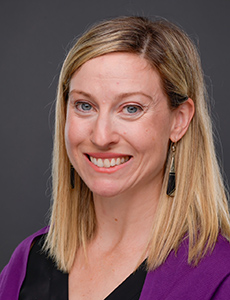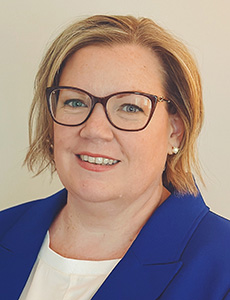Sponsored Content by Broadspire
First to Earn Gold Standard in Opioid Safety

Broadspire has become the first non-pharmacy benefit manager in the workers’ compensation space to receive URAC’s opioid stewardship designation, recognizing its established Interventional Pain Advocacy Program that emphasizes collaborative, evidence-based pain management for injured workers. The designation validates practices the company has been implementing for years, focusing on early clinical intervention and risk mitigation.
The URAC opioid stewardship designation represents a significant milestone for Broadspire, particularly given the crowded landscape of workers’ compensation pain management. “We’re the first in the non-PBM arena within the workers’ compensation space to receive this recognition, which is particularly exciting,” said Devon Mahaney, PharmD, Clinical Pharmacist, Interventional Pain Advocacy Program at Broadspire. “We’re proud to be recognized for the practices we’ve been implementing all along.”
The URAC application process proved comprehensive, requiring detailed documentation of the program’s many layers and successes. Broadspire submitted a complete overview of their Interventional Pain Advocacy Program, extensive policies and procedures aligned with CDC and FDA guidelines, and evidence of their data infrastructure and reporting capabilities. The company also provided case studies demonstrating meaningful outcomes, including reduced opioid use and successful deprescribing of high-risk medications.
URAC’s focus on safe prescribing and evidence-based therapies aligned naturally with Broadspire’s existing approach. “When we looked at all of the items that we needed to submit to get the designation, we thought, ‘We’re already doing all of this,'” Mahaney explained. The designation requires renewal every three years, with ongoing monitoring and clinical committee oversight to ensure continued compliance.
A Collaborative Approach to Pain Management

Devon Mahaney, PharmD, Clinical Pharmacist, Interventional Pain Advocacy Program, Broadspire
Broadspire’s Interventional Pain Advocacy Program distinguishes itself through its proactive, interdisciplinary structure. The program involves physicians, pharmacists, and nurses working together with treating providers and claims teams to create comprehensive review processes. This collaborative approach ensures that all necessary stakeholders participate in guiding safer, more effective pain management strategies.
The program’s enrollment criteria is straightforward: all patients receiving opioids are included, with priority given to those with increased risk factors such as additional sedating medications or advanced age. “If you’re receiving opioids, you’re in our program,” Mahaney noted. “As risk factors increase—adding other sedating medications or aging—you become our priority, but all opioid users are included in our program.”
Team qualifications play a crucial role in the program’s effectiveness. All members are clinically trained, including registered nurses, American Board-certified physicians, and licensed pharmacists. This diversity of expertise creates optimal conditions for comprehensive patient assessment. “As a pharmacist, I look at medication therapy, dosing, administration, sedation risk, and safety. A physician approaches it differently, as does a nurse,” Mahaney explained.
The program addresses a particularly challenging aspect of workers’ compensation: aging patient populations who have been on opioids for extended periods. “We have patients who’ve been on opioids for ten or twenty years. Whatever they were taking before may have been manageable, but as our patient population ages to 65 and older, our bodies respond differently to medication,” Mahaney observed.
Importantly, the program strives to find middle ground rather than simply eliminating opioid therapy. “We have a process and program that strives not to deny patients medication therapy,” Mahaney emphasized. “There can sometimes be benefits to receiving opioids. The way we approach everything is by managing safety and sustainability.”
Staying Ahead of Market Trends
The rapidly evolving pharmaceutical landscape presents ongoing challenges for pain management programs. New medications enter the market regularly, requiring constant monitoring and adaptation of treatment strategies. Mahaney described this challenge as “absolutely exhausting,” noting the dramatic increase in available medications since beginning practice.
To stay current, Broadspire employs a systematic approach to identify emerging trends. “Every month, I pull a report, and I look at the most expensive drugs that usually identifies the new drug classes,” Mahaney explained. This cost- and safety-based monitoring system effectively highlights new medications that appear in workers’ compensation claims.
The company’s approach to new medications involves thorough evaluation of effectiveness and appropriate use. For example, when a new non-opioid pain medication entered the market, Broadspire closely monitored its real-world effectiveness. “I just saw a patient receive it a couple of months ago. I looked in the records. It was not effective at all,” Mahaney reported, demonstrating the importance of ongoing assessment rather than simply accepting marketing claims.
This vigilance extends to understanding how new medications fit into existing treatment protocols. The program evaluates whether patients have tried appropriate alternatives before receiving expensive new therapies and monitors whether these medications actually provide meaningful benefits. By maintaining this systematic approach to emerging treatments, Broadspire ensures that its interventions remain evidence-based and cost-effective while providing safe and optimal patient care.
The designation renewal process will require ongoing demonstration of these practices, with quarterly committee reviews monitoring metrics and outcomes to ensure continued compliance with URAC standards.
To learn more, visit www.choosebroadspire.com.
This article was produced by the R&I Brand Studio, a unit of the advertising department of Risk & Insurance, in collaboration with Broadspire, A Crawford Company. The editorial staff of Risk & Insurance had no role in its preparation.










